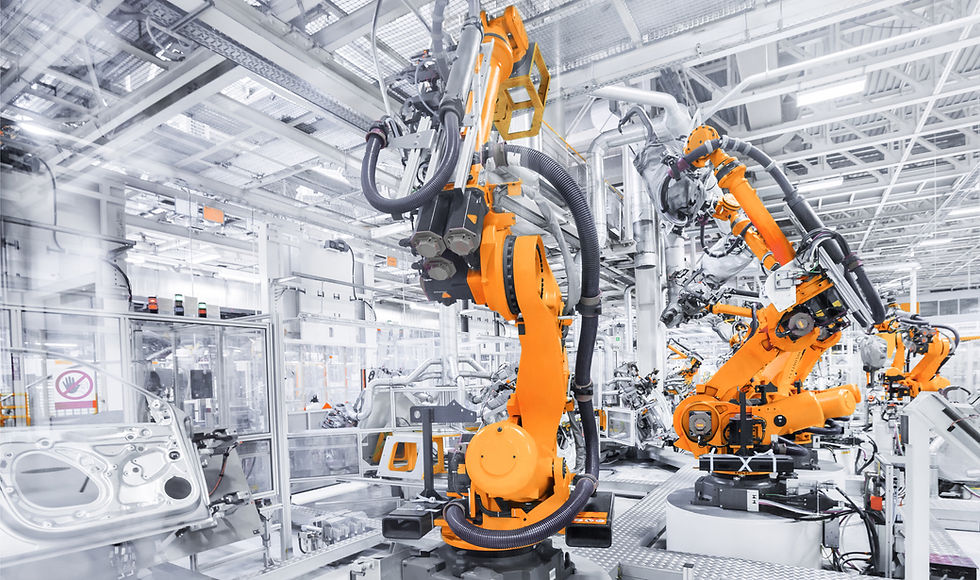- Anton Ruckman

- Jan 6, 2023
- 4 min read
Updated: Jan 12, 2023

As a product designer with 20 years of experience in the field, I have had the unique opportunity to witness the rapid evolution of wearable technology firsthand. From the early days of clunky fitness trackers to the sleek and sophisticated devices of today, it is clear that we have come a long way in terms of both technology and design. And as I look to the future, I am excited about the endless possibilities that lie ahead.
One trend that I believe will be crucial in the future of wearable technology is the integration of sensors into the body. These sensors could be used for various applications, such as monitoring health and fitness, providing real-time feedback on posture and movement, or even detecting and responding to emotions. Embedding sensors into the body offers several advantages, including a more seamless and unobtrusive user experience, as well as the potential for longer battery life and increased durability.
But the potential benefits of embedded sensors go far beyond convenience and functionality. These sensors have the potential to fundamentally change the way we interact with and understand our bodies. They could provide real-time data on our physical and mental well-being, helping us make more informed decisions about our health and behaviour. They could also enable us to track and analyze our progress over time, allowing us to set and achieve new goals.
Energy harvesting technologies will also play a significant role in the future of wearable devices. These technologies allow devices to harness and store energy from various sources, such as body heat, movement, or ambient light. This can help to extend the battery life of wearable devices and make them more self-sufficient. It could also reduce our reliance on traditional power sources, such as batteries or electrical outlets, making wearables more accessible and convenient for users in a wide range of settings.
One of the most exciting developments in the field of wearable technology is the integration of artificial intelligence (AI) and machine learning. These technologies have the potential to revolutionize the way we interact with and use wearable devices, allowing them to become more personalized and adaptive to the needs of the user.
One way in which AI could be integrated into wearable technology is through the use of embedded sensors. These sensors could collect data on the user’s behaviour, preferences, and needs and use machine learning algorithms to analyze and learn from this data. This could allow wearable devices to anticipate a user’s needs and provide proactive support, such as reminding them to take their medication or suggesting healthy snack options when their energy levels are low.
Another potential application of AI in wearable technology is in the realm of virtual assistants. Advanced digital assistants powered by machine learning could enable wearable devices to understand and respond to complex commands and queries, making them more user-friendly and intuitive. These assistants could also anticipate a user’s needs and provide proactive support, such as suggesting alternative routes during a commute or reminding them of upcoming appointments.
As AI and machine learning technologies continue to advance, we will likely see more sophisticated integration into wearable devices. This could lead to a future where wearable technology is not just an accessory or tool, but a valid extension of the user’s body and mind. It is an exciting and potentially transformative development and one that has the potential to shape the future of human-technology interaction in profound ways.
As wearable technology continues to evolve and move towards integration with the human body, the role of product designers will certainly shift. Instead of designing physical products, designers may focus more on creating digital experiences and interfaces that are intuitive and easy to use. This may involve designing for new types of input and output, such as haptic feedback or biometric sensors, and thinking about how to best integrate technology into the body in a way that is comfortable and non-invasive.
In addition to these technical considerations, designers will also need to think about the ethical and societal implications of wearable technology. This may involve designing for privacy and security, as well as addressing concerns about the potential impact of technology on our bodies and minds.
Overall, the integration of wearable technology with the human body presents both exciting opportunities and significant challenges for product designers. As this technology continues to advance, designers will need to adapt and stay up-to-date with the latest developments in order to create meaningful and impactful products. So, the Product Design field will have to change and adapt to these new technologies, and designers will need to learn and master new skills to stay relevant and successful in this evolving landscape.
It is crucial to understand how design and functionality interact with user experience when designing wearable products. Your product’s success depends on your understanding of wearable technology requirements, design constraints, and user interaction.
Wearable design can be complicated without a solid understanding of sensors and battery life, user experience, and how to handle valuable information.
Contact us today for more information about designing a wearable tech product that meets all your needs.


Comments